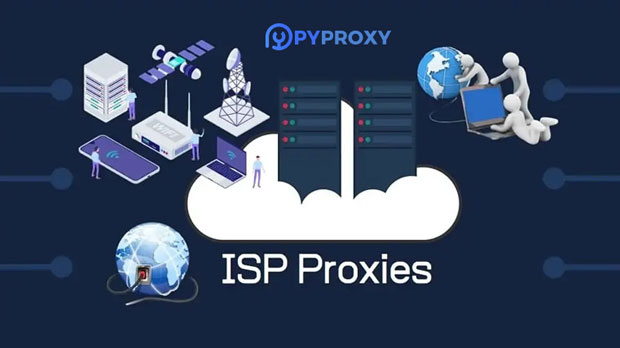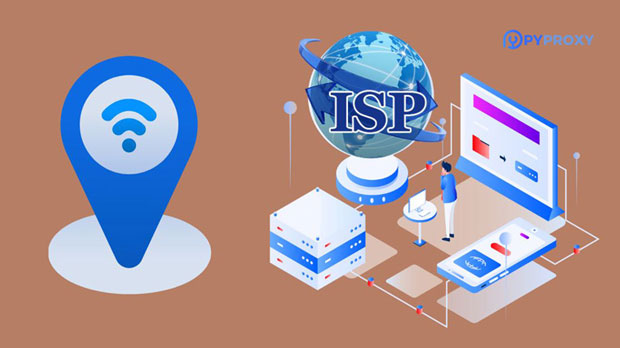What is the main difference between a Socks5 proxy server and a VPN?
When discussing online privacy and security solutions, two prominent technologies often come up: socks5 proxies and VPNs (Virtual Private Networks). Though both are used to mask a user's IP address, enhance privacy, and provide access to restricted content, they operate differently and serve distinct purposes. Understanding these differences is crucial for anyone considering either option. A socks5 proxy is a lightweight service designed to route traffic through an intermediary server, while a VPN is a more comprehensive solution that encrypts all traffic between the user and the internet. This article will break down the key distinctions between these two technologies in terms of functionality, security, speed, use cases, and limitations. What is a Socks5 Proxy?A Socks5 proxy is a type of proxy server that routes internet traffic from the user's device to a destination server through an intermediary server. The "Socks" protocol, specifically version 5, is versatile and can handle various types of internet traffic, including HTTP, FTP, and even peer-to-peer connections. Socks5 proxies operate at a lower level compared to other proxies, such as HTTP proxies, allowing them to support a broader range of applications and protocols.What is a VPN?A VPN, or Virtual Private Network, is a service that creates a secure and encrypted connection between a user’s device and the internet. Unlike a Socks5 proxy, which only routes traffic, a VPN encrypts all data sent between the user and the VPN server, ensuring that any information transmitted over the network is unreadable to third parties. VPNs also typically provide additional features, such as protection against DNS leaks, secure tunneling protocols, and the ability to bypass geo-restricted content.Key Differences in FunctionalityOne of the most significant differences between Socks5 proxies and VPNs lies in their functionality. 1. Traffic Routing vs. Full Encryption A Socks5 proxy only routes the user's traffic through an intermediary server without providing encryption. As a result, while it hides the user's IP address, it does not protect the data being sent. In contrast, a VPN routes traffic through an encrypted tunnel, ensuring that the data transmitted is secure, even if intercepted. This makes VPNs a preferred choice for anyone prioritizing privacy and security, particularly when using public Wi-Fi or conducting sensitive activities online.2. Protocol Support Socks5 proxies can handle various types of traffic, including TCP and UDP, making them more flexible than traditional HTTP proxies, which can only handle web traffic. However, VPNs also support multiple protocols like OpenVPN, WireGuard, and IKEv2, but their key advantage is the encryption feature, which provides a higher level of security for users.Security: Which is More Secure, Socks5 or VPN?In terms of security, VPNs are far superior to Socks5 proxies. 1. Encryption VPNs create an encrypted tunnel between the user’s device and the VPN server, making it extremely difficult for any third party to intercept or decode the information being transmitted. This level of security is crucial for protecting sensitive data, such as passwords, financial information, or private communication. Socks5 proxies, on the other hand, do not encrypt the traffic, leaving it vulnerable to interception. 2. Data Privacy VPN services often provide additional privacy features, such as DNS leak protection, kill switches, and IP masking. These features further enhance the privacy and security of users. A Socks5 proxy, while masking the user's IP address, does not offer the same level of privacy and security measures. In fact, the lack of encryption means that anyone with the proper access could monitor the user's internet activity more easily.Speed: Socks5 Proxy vs. VPNAnother major difference between Socks5 proxies and VPNs is their impact on internet speed.1. Socks5 Proxy Speed Because Socks5 proxies do not encrypt traffic, they typically offer faster speeds compared to VPNs. The absence of encryption means there is less processing required for data transfer, which allows users to experience lower latency and faster connections. This makes Socks5 proxies a preferred choice for activities that require high-speed internet, such as streaming or gaming, where speed is a priority over security.2. VPN Speed VPNs, due to the encryption process, can cause a noticeable decrease in speed. The more robust the encryption, the greater the impact on speed. However, many modern VPN services use optimized protocols and servers that minimize this slowdown, though users may still experience slower speeds compared to Socks5 proxies. For users who prioritize both security and speed, selecting a high-performance VPN provider is essential.Use Cases: When to Choose Socks5 Proxy or VPN?Understanding when to use a Socks5 proxy or a VPN depends on the user's needs.1. When to Use a Socks5 Proxy Socks5 proxies are ideal for users who need to route specific types of traffic (e.g., P2P traffic or torrenting) and wish to maintain a high level of speed. These proxies are also useful for bypassing geographical restrictions on content or for accessing certain services anonymously, such as browsing social media or online forums. However, users should not rely on Socks5 proxies when performing activities requiring high security, such as online banking or accessing private data.2. When to Use a VPN VPNs are the go-to solution for users seeking comprehensive privacy, security, and anonymity online. They are especially useful when using public networks (e.g., cafes or airports), as they protect your data from potential hackers. Additionally, VPNs are ideal for accessing content that is geo-restricted, such as streaming services or websites. For any activities that involve sensitive information, such as logging into bank accounts or making online purchases, a VPN is highly recommended.Limitations of Socks5 Proxy and VPNWhile both Socks5 proxies and VPNs offer valuable services, they come with their own limitations.1. Socks5 Proxy Limitations - No Encryption: As mentioned, Socks5 proxies do not encrypt traffic, which makes them unsuitable for secure browsing. - Limited Security Features: Socks5 proxies do not offer additional security features, such as kill switches or DNS leak protection, which can leave users exposed to risks. - Not Ideal for Sensitive Tasks: For activities like online banking, shopping, or accessing sensitive data, Socks5 proxies should not be used.2. VPN Limitations - Slower Speeds: The encryption process used by VPNs can lead to slower internet speeds, especially when high-security protocols are used. - Connection Issues: VPN connections can sometimes drop or experience slowdowns if the servers are crowded or the user's internet connection is unstable. - Cost: High-quality VPN services often come with subscription fees, which might be a consideration for users on a budget.ConclusionBoth Socks5 proxies and VPNs serve different purposes, and understanding their key differences will help users select the right solution based on their needs. If you prioritize speed over security, a Socks5 proxy might be the better option. However, for comprehensive online security and privacy, particularly for sensitive tasks, a VPN is the superior choice. While both tools can help bypass geographical restrictions and anonymize browsing, the added encryption and security features of a VPN make it the more reliable option for protecting your data and maintaining privacy.
2024-12-23
























































